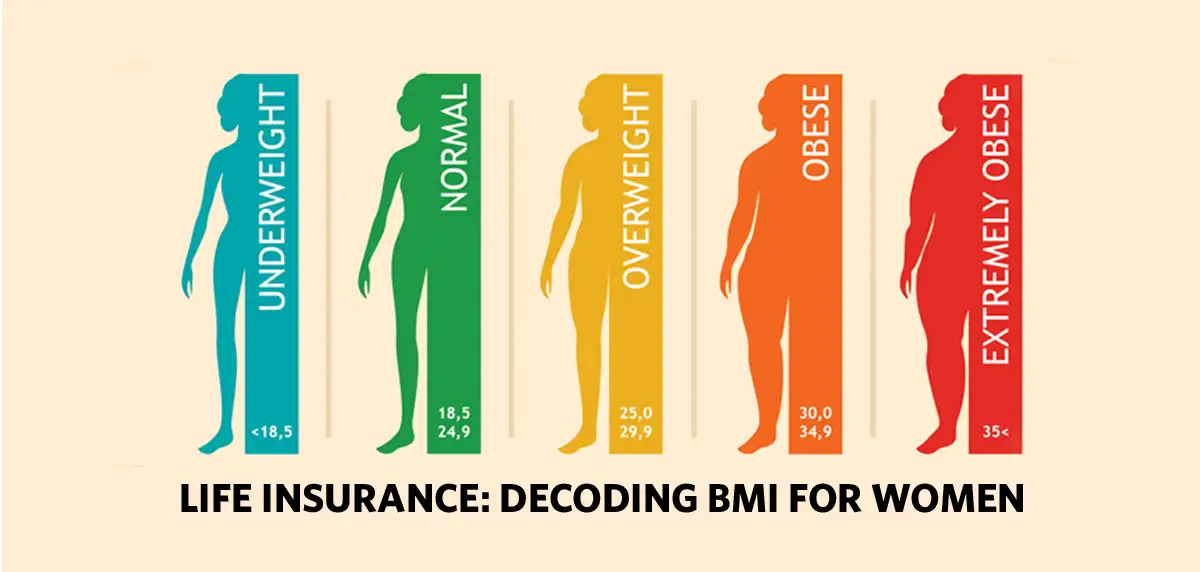Among several health indicators, BMI plays a crucial role in life insurance. It directly affects the premiums you pay and the coverage you receive, helping insurers assess your overall health and potential risks. Among the key health indicators used by insurers is your Body Mass Index (BMI). For women, BMI often becomes a defining factor in determining the cost and acceptance of a life insurance policy. Understanding how BMI impacts a life insurance policy can help you make informed decisions while securing financial protection for your family.
What is BMI and Why Does It Matter?
Body Mass Index (BMI) is a numerical value calculated using your height and weight. It serves as an indicator of body fat and helps classify individuals into different weight categories, including underweight, normal weight, overweight, and obese. While BMI is not a direct measure of body fat, it is widely used by health professionals and insurance companies to assess overall health risks.
For women, BMI becomes particularly significant when applying for life insurance. A higher BMI may suggest potential health risks, while a lower BMI could also indicate underlying health conditions. Insurers consider these factors when calculating life insurance premiums or deciding the eligibility for coverage.
How Does BMI Impact Life Insurance for Women?
Premium Calculation:
Insurance companies view BMI as a marker of overall health. Women with a healthy BMI typically pay lower premiums as they are perceived to have a lower risk of developing serious health conditions. Conversely, women with higher or lower-than-average BMI may face higher premiums due to potential health concerns.
Policy Approval:
In some cases, extremely high or low BMI levels may lead insurers to decline the policy altogether. For instance, women with a BMI indicating severe obesity may be viewed as high-risk applicants, resulting in policy denial or higher coverage costs.
Health Risk Assessment:
BMI is often linked to health conditions like diabetes, hypertension, cardiovascular diseases, and certain types of cancer. When insurers notice a BMI that falls outside the healthy range, they may anticipate higher future health claims, influencing the overall premium or policy acceptance.
Ideal BMI Range for Women in Life Insurance
Most insurers consider a BMI range of 18.5 to 24.9 as healthy. Falling within this range generally qualifies women for standard life insurance premiums be it a term insurance plan or a Unit Linked Insurance Plan. You can use a BMI calculator to compute your BMI and check if you may have to pay a higher premium. The BMI chart for women has the following ranges:
Underweight (BMI below 18.5):
May raise concerns about malnutrition or underlying health issues, leading to higher premiums or policy rejection.
Normal weight (BMI 18.5 to 24.9):
Considered the healthiest range, often resulting in lower premiums and straightforward policy approvals.
Overweight (BMI 25 to 29.9):
May slightly increase premium rates, depending on other health conditions.
Obese (BMI 30 and above):
Typically results in higher premiums or conditional policy approvals due to increased health risks.
Your Body Mass Index (BMI) plays a critical role in determining your life insurance coverage and premium costs. For women, understanding the impact of BMI and proactively managing it can result in better policy terms and improved health outcomes. By making informed lifestyle choices and working towards a healthy BMI, you can not only secure affordable life insurance but also ensure a healthier and financially secure future for your family.





















